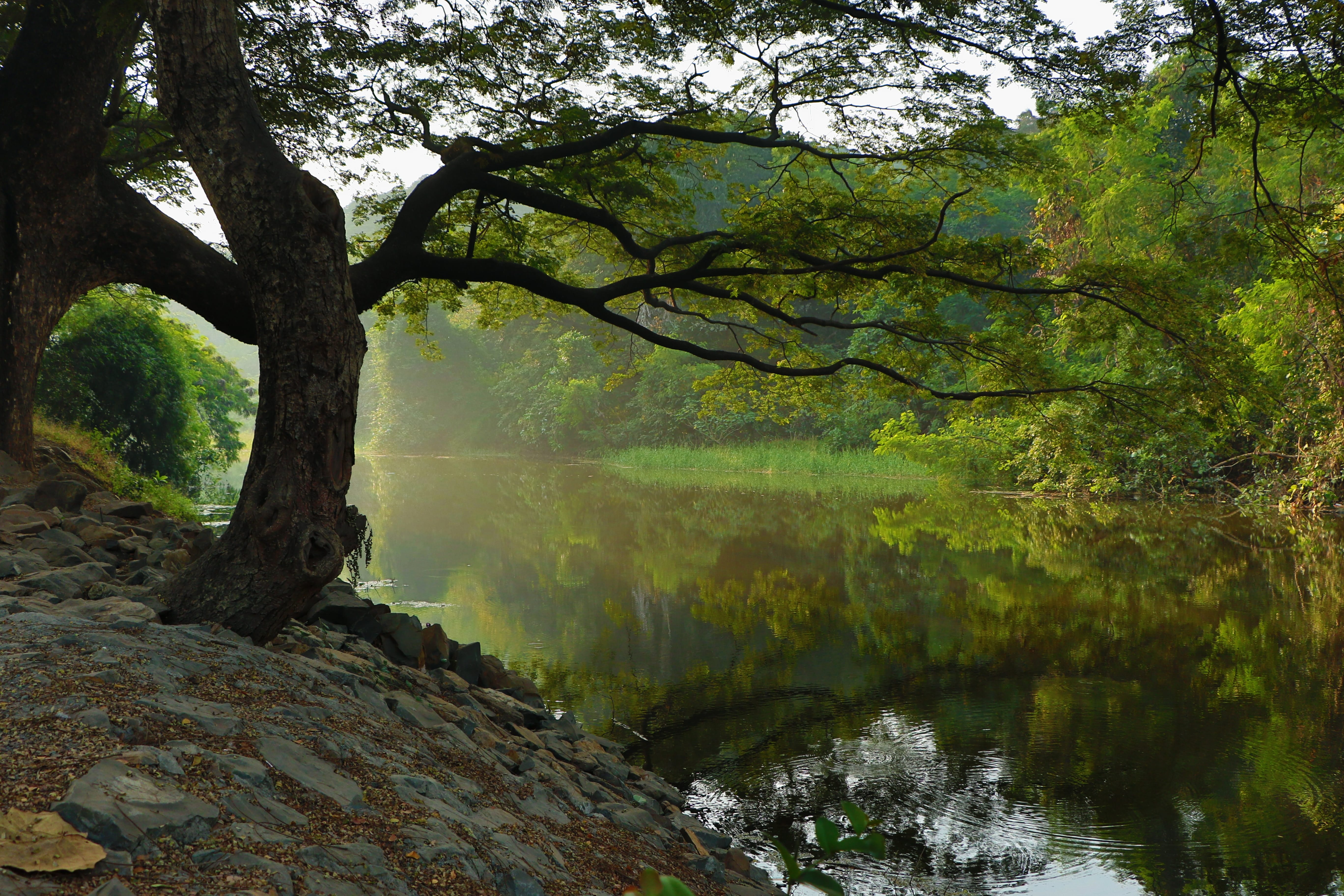When our parents used to tell us to “Get outside and play,” they were onto something. Outdoor learning offers a wealth of benefits to kids’ bodies and minds.
What happens to your body and mind when you escape the office and step outdoors? It’s likely that you find yourself growing calmer, more relaxed, and more focused. It’s no different for children. Outdoor learning can not only teach kids resilience, but it can help them develop a myriad of other important life skills, too. Here’s how getting your children outside can help make them stronger for the rest of their lives.
Nature can reduce the impact of stress.
Being exposed to a natural setting can have a powerful effect on the emotional and cognitive functioning of a child. Children who grow up among greenery have a lower risk of mood disorders and substance abuse (Engemann et al 2019) – even children who have experienced life stressors like bullying or other forms of anxiety.
Why? Nature helps to build self-confidence and self-efficacy. It also reduces cortisol levels. A study published in the International Journal of Environmental Research and Public Health revealed that the daily levels of the stress hormone cortisol were consistent and healthy among children who were given access to an outdoor education. Those who were kept indoors, on the other hand, had much higher levels of stress.
Watching a plant grow teaches patience and improves academic performance.
There’s a reason why so many elementary school classrooms teach students how to grow bean or tomato plants. Planting a seed not only shows a child the value of life, but it helps teach patience and the importance of caring for something else. This has a major impact on a student’s learning.
That impact extends long beyond the initial experience. Outdoor learning, whether it involves the cultivation of plants or not, helps even older students retain academic content and to keep themselves focused. It can even improve their memory.
Overcoming physical barriers shows how to overcome adversity.

Being exposed to an outdoor learning environment gives young people a way to become more resilient. By exploring the world, one tree at a time, children will learn how to move away from the classroom, away from the home, and into the great wide world. This progressive exposure to the larger environment helps develop the lifelong skills, self-esteem, and resilience that are needed to overcome challenges later in life (Allen et. al 2012). The so-called “character-skills” that being outdoors helps to build are recognized as major contributing factors when it comes to a child’s lifelong success.
Being outside teaches students how to collaborate, negotiate, and accept risk.
An outdoor environment is a great setting for group work. It’s less controlled and students have the opportunity to build relationships with their peers and learn how to problem-solve with others. Kids are more engaged and because they are being exposed to the positive effects of daylight and exercise, they’re also more focused.
These enhanced levels of focus, energy, and enthusiasm (Kuo et al, 2018) make it easier for kids to work with others. They quickly learn to rely on their peers for help, as well as how to accept the risks of learning. These positive traits are almost always carried forth into more significant experiences later in life.
Outdoor learning can give kids a sense of place, community, and family.
Being outdoors helps to strengthen a child’s sense of place by connecting him or her to the local environment and community. When students have a strong sense of place, they can better understand the natural and human communities that have brought them there.
Outdoor experiences in childhood help create an adult who is civically engaged, committed to the local community, and involved with his or her family. The relationships formed through outdoor learning often last a lifetime.
Over 6 million American kids are diagnosed with stress-related mental health disorders, like depression and anxiety, each year. Why attempt to cure it with a pill when you have the solution right in your own backyard? Early outdoor experiences – as well as those later in life – will give your child the foundation he or she needs to be mentally strong, resilient, and, of course, happy.
References
Allan, J. F., Mckenna, J., & Hind, K. (2012, 10). Brain resilience: Shedding light into the black box of adventure processes. Journal of Outdoor and Environmental Education, 16(1), 3-14. doi:10.1007/bf03400934
Blair, D. (2009, 01). The Child in the Garden: An Evaluative Review of the Benefits of School Gardening. The Journal of Environmental Education, 40(2), 15-38. doi:10.3200/joee.40.2.15-38
Data and Statistics on Children’s Mental Health | CDC. (n.d.). Retrieved from https://www.cdc.gov/childrensmentalhealth/data.html
Dettweiler, U., Becker, C., Auestad, B. H., Simon, P., & Kirsch, P. (2017, 04). Stress in School. Some Empirical Hints on the Circadian Cortisol Rhythm of Children in Outdoor and Indoor Classes. International Journal of Environmental Research and Public Health, 14(5), 475. doi:10.3390/ijerph14050475
Dyment, J. (2005). Gaining ground: The power and potential of school ground greening in the Toronto District School Board. Evergreen. http://www.evergreen.ca/en/lg/gaining_ground.pdf
Engemann, K., Pedersen, C. B., Arge, L., Tsirogiannis, C., Mortensen, P. B., & Svenning, J. (2019, 02). Residential green space in childhood is associated with lower risk of psychiatric disorders from adolescence into adulthood. Proceedings of the National Academy of Sciences, 116(11), 5188-5193. doi:10.1073/pnas.1807504116
Kuo, M., Browning, M. H., & Penner, M. L. (2018, 01). Do Lessons in Nature Boost Subsequent Classroom Engagement? Refueling Students in Flight. Frontiers in Psychology, 8. doi:10.3389/fpsyg.2017.02253
Malone, K., & Waite, S. (2016). Student Outcomes and Natural Schooling: Pathways form Evidence to Impact Report 2016. https://www.plymouth.ac.uk/uploads/production/document/path/6/6811/Student_outcomes_and__natural_schooling_pathways_to_impact_2016.pdf


Join the conversation!